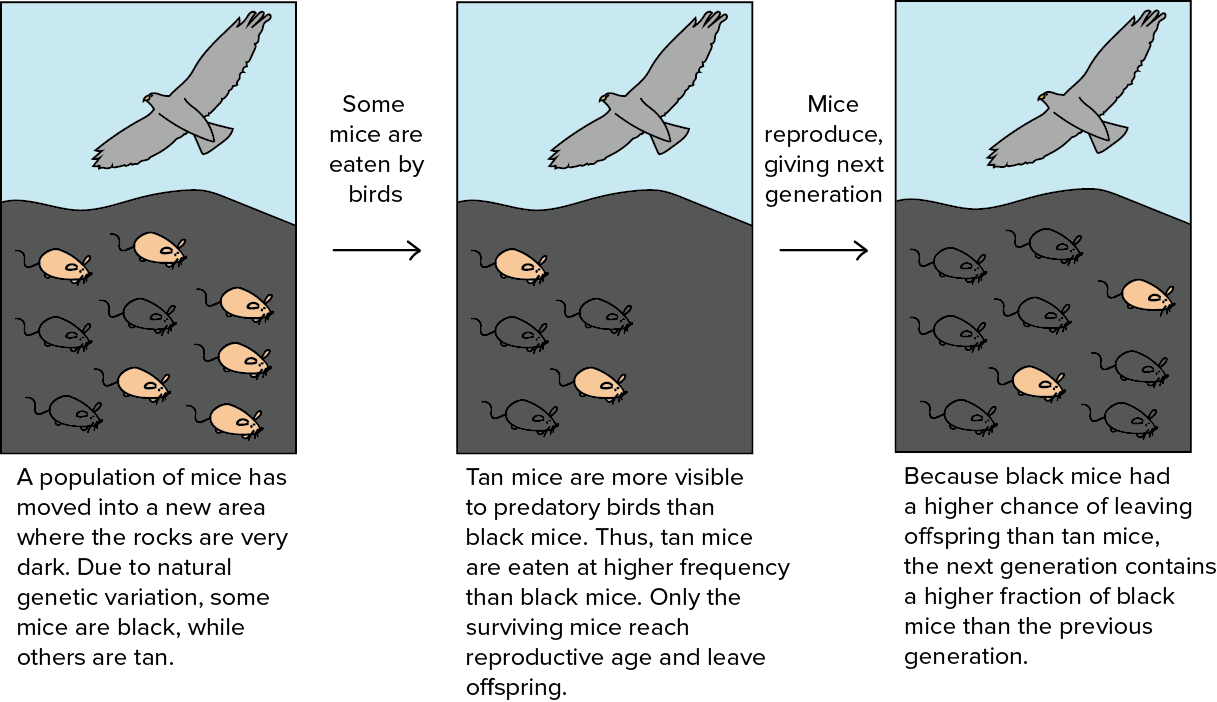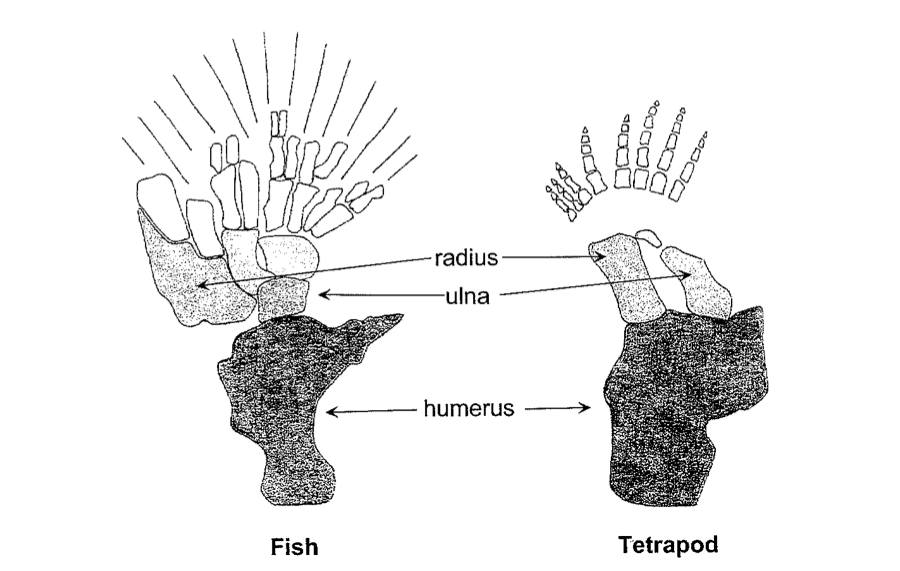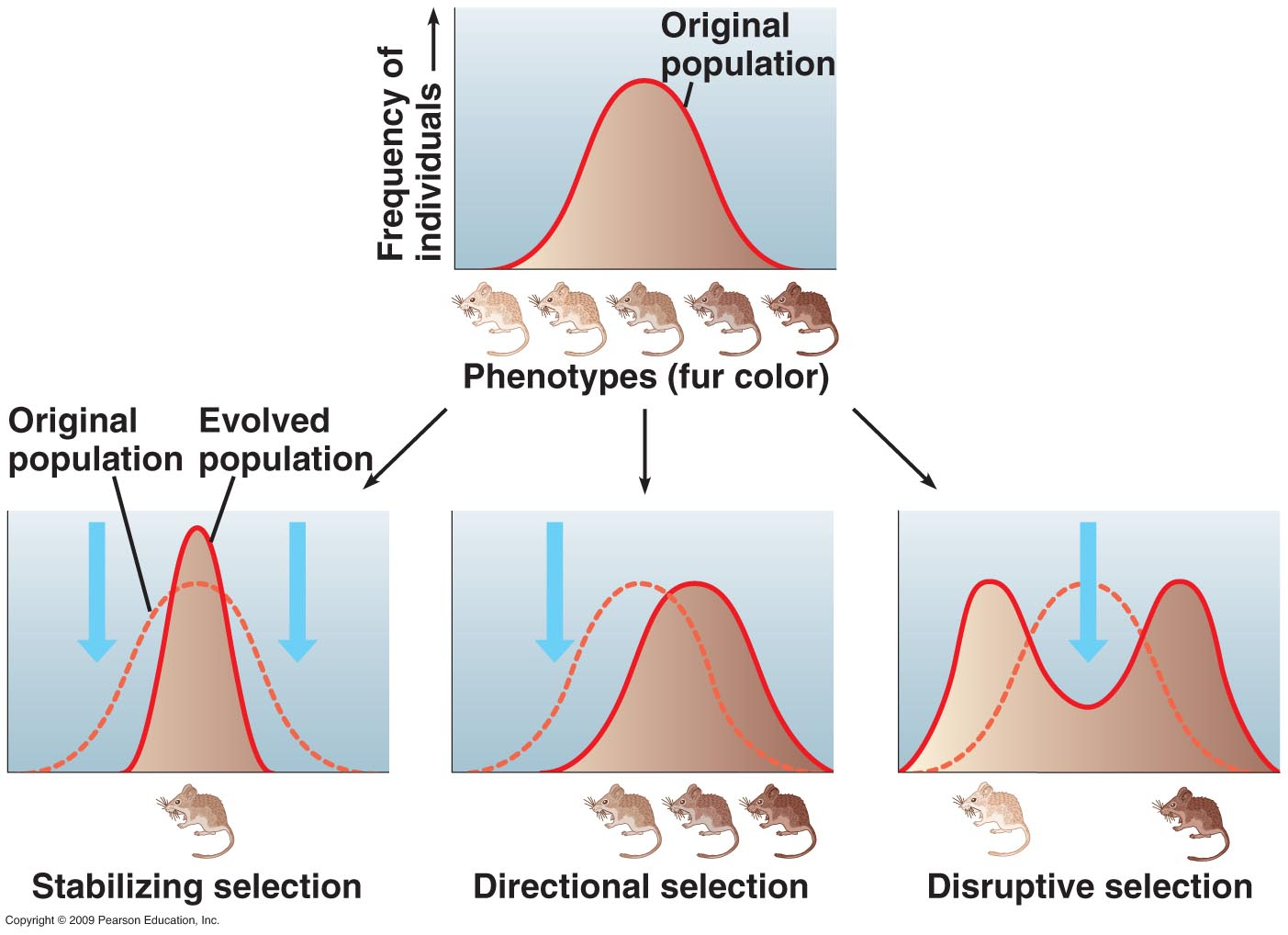Unit 8 Reflection
This unit was all about evolution. The very first concept we learned about was variation and artificial selection. Variation is any difference of traits within a population. Variation exists because of crossing over, meiosis, mutations, and sex, and it is extremely important within a species. It accounts for all the genetic differences within any species, and without any genetic diversity, all species would quickly become extinct. With no genetic variance, all species will be exactly the same, and if there was ever an event that killed one of the organisms, all of the organisms would die. We also learned about artificial selection, which is the process of humans breeding organisms together for our purposes. A perfect example of this are dogs, which are bred for different purposes. For instance, collies are bred for sheep herding, chihuahua are bred to be guard dogs and pit bulls are bred as fighting dogs.

Next, we learned about Charles Darwin and his observations and conclusions about natural selection. Charles Darwin was the scientist who discovered that evolution is caused by natural selection. He made 4 main observations on this subject: First, all sexually reproducing species have high genetic variation - variation in traits. Second, traits are always inherited from parents to their offspring. Third, all species are capable of producing more offspring than the environment can support. Fourth, Competition in any population is stiff and not all offspring can survive because of the limited food or other resources. Darwin described this competition and survival of the fittest because only the best of the species survive. From these observations, Darwin made 2 main conclusions. First, individuals how inherited traits that are favorable for their survival help them reproduce and those organisms tend to leave more offspring than other individuals. In other words, this means that there are winners and losers in this population, and the winners reproduce more. The second conclusion that Darwin made was the unequal ability of individuals to survive and reproduce will result in better traits becoming more common in the population over generations. In simpler terms, the population begins to look like the winners. Based on this, natural selection is the process of weeding out traits in a population that DO NOT help individuals survive, leaving traits that are either neutral or favorable to individuals. Natural selection causes populations to evolve over time.

In our third vodcast, we learned about gene pools and the basic concept of evolution. The gene pool is the total of all alleles in a population. Genetic variation is stored in the gene pool, and gene pools change as new allele combinations form when individuals of the population have offspring. Allele frequencies measure genetic variation. The allele frequency is how common an allele is in a population. We can determine allele frequency by adding up all alleles in a population and adding up the total of each type of allele. For each type of allele, you divide by the total, getting a decimal allele frequency. Natural selection favors certain phenotypes, and those with the better phenotypes survive and reproduce. These “winners” pass their alleles to their offspring. Evolution is a change in allele frequency over time. As natural selection favors specific phenotypes, those alleles will become more common in the population. Therefore, the population, or gene pool, evolves over time. Lethal alleles stick around by being the recessive allele in the population. In heterozygotes, that have the favorable phenotype, the recessive allele is still in their genetic makeup. Thus, because of their phenotype, natural selection favors them, however, they can still pass on their recessive allele to their offspring. This can be beneficial for populations in conditions, especially environmental conditions change.

In the fourth lesson in our unit, we learned about speciation, and where new species come from. A species is a group of individuals that can reproduce and have fertile offspring. Speciation is the rise of 2 or more species from one existing species. This takes a long time, usually many generations. Speciation is caused by reproductive isolation. Reproductive isolation happens when a population is split into 2, and eventually, the 2 populations can’t reproduce with each other when they meet again. There are 3 main causes of speciation: behavioral isolation, temporal isolation, and geographic isolation. Behavioral isolation is caused by changes in mating behaviors or occupying different niches. Human barriers and natural barriers can also geographically isolate a population. A population may be split into two because of the formation of a mountain or a natural disaster, and if there is no gene flow between the two populations, geographic isolation occurs. The two new species will adapt to their environment and thus there is the possibility of separation. Temporal isolation happens when timing prevents reproducing between populations. Species are related based on a common ancestor - Over a very long period of time, new species arise, and new species arise for earlier species. All these species share a common ancestor. Descendants of common ancestors have common traits. There are two patterns of speciation, gradualism and punctuated equilibrium. Gradualism happens when speciation occurs slowly, but over many generations, many new species arise. The evidence of gradualism is ancestor fossils on bottom layers when descendants fossils are on top layers with transitional pieces in between. Punctuated equilibrium happens when new species arise “suddenly.” In this scenario, speciation occurs extremely fast, usually due to sudden reproductive isolation. There are no transitional forms and there are big differences between layers.

Our fifth vodcast was all about the structural evidence to support the theory of evolution. There is a ton of developmental evidence of evolution. Embryology is the form of evidence when similar stages of embryo development suggest common ancestry. Evo-devo is the study of the evolution of developmental processes in multicellular organisms. Another compelling piece of evidence that supports evolution are fossils. Fossils form when organisms die, and they are covered in sediment, clay or ash, and does not decay. There is a fossil bias, however, to organisms with bones or shells. Unicellular, soft bodied invertebrates, plants and insects are less likely to have fossils. Fossils tell us that animals and plant forms have changed over time. Fossils also tell us that extinction is the fate of most species that have ever existed. Homologous structures are another piece of evidence. Homologous structures are the same structures used in multiple organisms for different purposes. This suggests a common ancestry. Analogous structures are kind of the opposite, when species use different structures for the same function. Covert evolution is the process where unrelated organisms evolve similarly or analogous structures. For example insect wing, bird wing and batwing are all used to help organisms fly but they all that different structures.

Our sixth lesson was about evolving populations and what factors can cause a population to evolve. Natural selection can change the distribution of traits in three main ways. Directional selection, stabilizing selection and disruptive selection. Directional selection happens when natural selection favors phenotypes at one extreme. This causes the population to begin to look like the extreme phenotype because it proves beneficial for survival. Stabilizing selection happens when natural selection favors the intermediate phenotype, and the population will thus “stabilize” on the middle phenotype. Disruptive selection happens when natural selection favors both extreme phenotypes for survival. This might cause the population to split into two because only the two extremes are beneficial for survival, and thus the intermediate phenotype will no longer exist. Although this does not guarantee speciation is could be the beginning of species. There are 5 types of change in populations, with only one being natural selection. Genetic drift happens when a random event drastically changes a population and results in a change in allele frequency. In other words, genetic drift changes allele frequencies due to chance alone. Gene flow is the movement of alleles from one population to another. Gene flow could be the prevention of speciation. Mutations produce new genetic variation that natural selection can act on, leading to evolution. The final type of change in sexual selection, which selects traits that improve mating success, but don;t help organisms survive better AT ALL.

The last lesson in our unit about evolution was on the History of life. Life formed on earth when chemical and physical processes on early Earth may have produced very simple cells through a sequence of stages: Abiotic synthesis of small organic molecules, the joining of these small molecules into macromolecules, the packaging of molecules into protocells, and the origin of self replicating molecules. Earth’s history is broken into groups of time-based on major events in the fossil record. There have been 5 mass extinctions in Earth's history and the eras of Earth history are divided by mass extinctions. The precambrian era accounts for 88 percent of Earth’s history, starting 4.6 billion years ago to 542 million years ago. In this era, the oldest fossils of prokaryotes were found, the concentration of oxygen in the atmosphere increased, and the oldest fossils of eukaryotic cells appeared. In the next era, the paleozoic era, which was 542-251 MYA, has 3 mass extinctions, and included the colonization of land by plants and animals, the diversification of vascular plants, and age of fishes and amphibians, the origin of reptiles, the radiation of reptiles, and the origin of insects. The next era, the mesozoic era was from 251-65.6 MYA, and was the age of reptiles. The last era the cenozoic era is the current era we are in, starting from 65.6 MYA. The mammals have got the upper hand in this era.
Personally, I enjoyed this unit probably more than any another unit so far, because of the way in which the material was taught. Through main interactive labs and analysis, I was able to understand all the concepts while still being able to apply the concepts to real-world examples. My favorite lab all year has been the hunger games lab, in which we simulated natural selection by competing for food. It was clear the population began to look like the most beneficial phenotype, and this lab helped me understand Darwin's two conclusions. The analysis for this lab can be found here.
This is one the units that I found most interesting, but I really wanted to learn more about the history of life and what caused some of the mass extinctions, and the process in which organisms rebounded from those mass extinctions. How did the mass extinctions happen and did the way it happens give certain types of organisms an upper hand in the next era of earth. What caused the rise and fall of certain species and how exactly those species contributed to the rise and fall of new species? These are all unanswered questions I have, and evolution is a topic that I really want to learn more about.
Throughout this unit, I feel that I have really grown as a student, especially becoming more assertive. The main principle that I learned the last unit that I have strived to follow in this unit was to fake it until you make it. Throughout our projects in this unit, I have always tried to take on a leadership role, making sure that everything ran smoothly, and everybody was doing something at all times. However, I still need to make sure that everyone is enjoying what they are doing, trying to make everything a win-win situation like any assertive person does.




